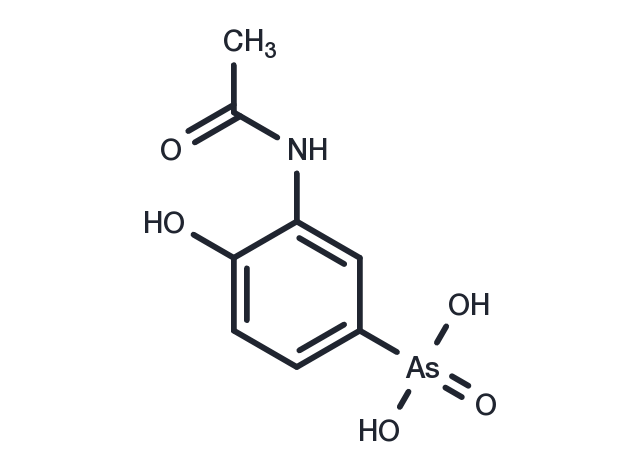Powder: -20°C for 3 years | In solvent: -80°C for 1 year


Acetarsone is an antiinfective agent. Acetarsone also inhibits protozoa growth.

| Pack Size | Availability | Price/USD | Quantity |
|---|---|---|---|
| 25 mg | 6-8 weeks | Inquiry | |
| 50 mg | 6-8 weeks | Inquiry | |
| 100 mg | 6-8 weeks | Inquiry |
| Description | Acetarsone is an antiinfective agent. Acetarsone also inhibits protozoa growth. |
| Synonyms | Osarsol, Vagisept, NSC 13160, NSC-13160, Amarsan, Amoebal |
| Molecular Weight | 275.09 |
| Formula | C8H10AsNO5 |
| CAS No. | 97-44-9 |
Powder: -20°C for 3 years | In solvent: -80°C for 1 year
DMSO: Soluble
You can also refer to dose conversion for different animals. More
bottom
Please see Inhibitor Handling Instructions for more frequently ask questions. Topics include: how to prepare stock solutions, how to store products, and cautions on cell-based assays & animal experiments, etc.
Acetarsone 97-44-9 Osarsol Vagisept NSC 13160 NSC13160 NSC-13160 Amarsan Amoebal inhibitor inhibit
